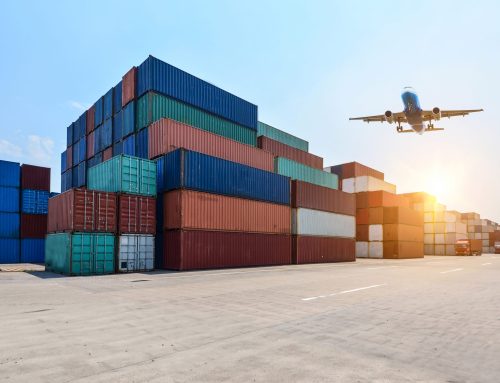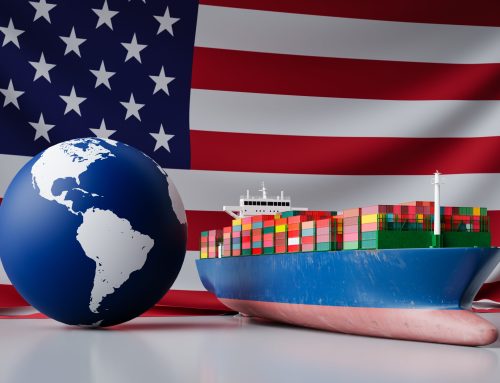As we enter 2025, the incoming administration has signaled its intent to reassess trade policies, potentially resulting in broad tariff increases. Importers across all industries may feel the impact, with higher costs affecting supply chains and overall profitability.
Now is the time to take proactive steps to prepare and mitigate these challenges. Reviewing your import strategy, understanding your tariff exposure, and exploring cost-saving mechanisms are critical to staying ahead of the curve.
Here are some actionable strategies to safeguard your operations in this evolving trade landscape. Together, we can navigate these changes and help your business thrive in 2025:
Frontloading
Front-loading involves accelerating your import schedule to bring in goods before new tariffs take effect. By building inventory ahead of time, you can avoid paying increased duties on future shipments. This approach can be particularly beneficial for high-volume or high-value goods, where tariff hikes could significantly impact profitability.
To implement a front-loading strategy effectively:
- Assess Inventory Needs: Identify key products where early imports make financial sense.
- Coordinate with Suppliers: Communicate with your suppliers to ensure they can meet expedited production and shipping timelines.
- Review Logistics: Work with your freight forwarders and customs brokers to prioritize and streamline shipments to meet deadlines.
While front-loading can provide immediate cost savings, it requires careful planning to avoid overstocking or logistical bottlenecks.
Diversification of trade partners
Shifting or expanding your supply chain to include partners in regions with preferential tarrifs can help offset the impact of increased tariffs from other trading partners.
Here’s how to effectively diversify trade partners:
- Review Applicable Trade Agreements: Identify FTAs or trade programs that apply to your product categories (e.g., USMCA, CAFTA-DR, or GSP).
- Evaluate Supply Chain Feasibility: Research potential suppliers in countries covered by these agreements and assess their ability to meet your quality, volume, and timeline requirements.
- Conduct Cost-Benefit Analysis: Factor in not only tariff savings but also transportation costs, lead times, and any additional compliance requirements.
- Leverage Your Broker’s Expertise: Collaborate with your customs broker to ensure you meet documentation and origin certification requirements to qualify for preferential treatment.
Diversifying trade partners is a long-term strategy that enhances supply chain resilience while reducing exposure to tariff volatility. By strategically sourcing from countries with favorable trade terms, your business can navigate shifting policies more effectively while maintaining a competitive edge.
Declared Value
importers should consider reevaluating their declared value to minimize duty costs legally. Tools like the First Sale Rule and value deductions can help reduce the amount on which duties are calculated, providing significant savings.
Here’s how these strategies can work for your business:
1. First Sale Rule
Under the First Sale Rule, the declared value for customs purposes can be based on the price paid in the first sale of a transaction—typically between the manufacturer and the middleman—rather than the final price paid by the importer. This approach often results in a lower dutiable value, leading to reduced tariff costs.
Steps to Utilize the First Sale Rule:
- Identify Eligible Transactions: Ensure your supply chain involves multiple sales (e.g., manufacturer to distributor, distributor to you).
- Document Transparency: Maintain detailed records, including invoices and contracts, to prove the first sale qualifies under U.S. Customs rules.
- Work with Experts: Consult with your customs broker or legal advisors to confirm compliance and implementation.
2. Value Deductions
Certain elements of a shipment’s value can be excluded from the declared value, such as:
- Freight and Insurance Costs: For imports on a CIF (Cost, Insurance, Freight) basis, ensure these components are properly excluded if allowed.
- Post-Import Costs: Costs like installation, assembly, or maintenance after importation may qualify for exclusion.
- Assists and Other Adjustments: Identify non-dutiable elements provided by the importer, such as tooling or molds.
How to Apply Value Deductions:
- Audit Current Valuations: Review your current valuation methods to identify opportunities for legitimate deductions.
- Adjust Contracts and Invoices: Ensure supplier invoices clearly separate deductible costs to support your customs declarations.
- Maintain Thorough Documentation: Accurate records are critical to defending these deductions in case of a customs audit.
By reevaluating declared value and leveraging these methods, you can significantly reduce your tariff exposure while staying compliant with regulations.
Leveraging Free Trade Zones
Leveraging Free Trade Zones (FTZs) can be a powerful tool to manage costs and improve supply chain efficiency. FTZs offer unique benefits by providing a controlled space where goods can be imported, stored, processed, or re-exported without incurring duties until they enter the U.S. market.
Here’s how utilizing FTZs can help:
1. Deferring or Eliminating Tariffs
- Duty Deferral: Importers only pay duties when goods leave the FTZ and enter the U.S. market. This deferral can significantly improve cash flow.
- Duty Elimination: If goods are processed in the FTZ and re-exported, no U.S. tariffs are applied.
2. Reducing Tariff Costs Through Inverted Tariffs
If your finished product has a lower duty rate than its components, assembling the product in an FTZ allows you to pay the lower rate on the finished product instead of higher rates on individual components.
3. Simplifying Customs Procedures
FTZs streamline customs compliance with benefits such as:
- Consolidated weekly entry filings to reduce paperwork and fees.
- Fewer inspections, as FTZs are secure and closely monitored environments.
4. Enhancing Supply Chain Flexibility
FTZs offer storage and operational flexibility, allowing businesses to hold inventory until market conditions improve, or tariffs stabilize. Additionally, goods can be sorted, packaged, or labeled within the FTZ without triggering duties.
How to Get Started with FTZs
- Assess Eligibility: Determine if your business operations and products are a good fit for FTZ benefits.
- Identify an FTZ Near You: Many industrial parks and logistics hubs host FTZs. Work with local economic development authorities or logistics partners to locate the best option.
- Partner with Experts: Setting up and operating within an FTZ requires compliance with U.S. Customs regulations. Collaborate with customs brokers, consultants, or trade attorneys to ensure compliance and maximize benefits.
Leveraging FTZs can provide a strategic advantage in reducing costs, improving cash flow, and increasing operational efficiency. As tariffs rise, exploring FTZ opportunities can be an essential part of your mitigation strategy and help you stay competitive in an evolving trade landscape.
Looking for expert guidance to navigate rising tariffs and complex customs regulations? Clearit USA, a leading online customs broker in the USA, provides fast, reliable, and affordable customs clearance solutions tailored to your business needs.
Visit ClearitUSA.com today and ensure your import operations are compliant and cost-efficient in 2025!





